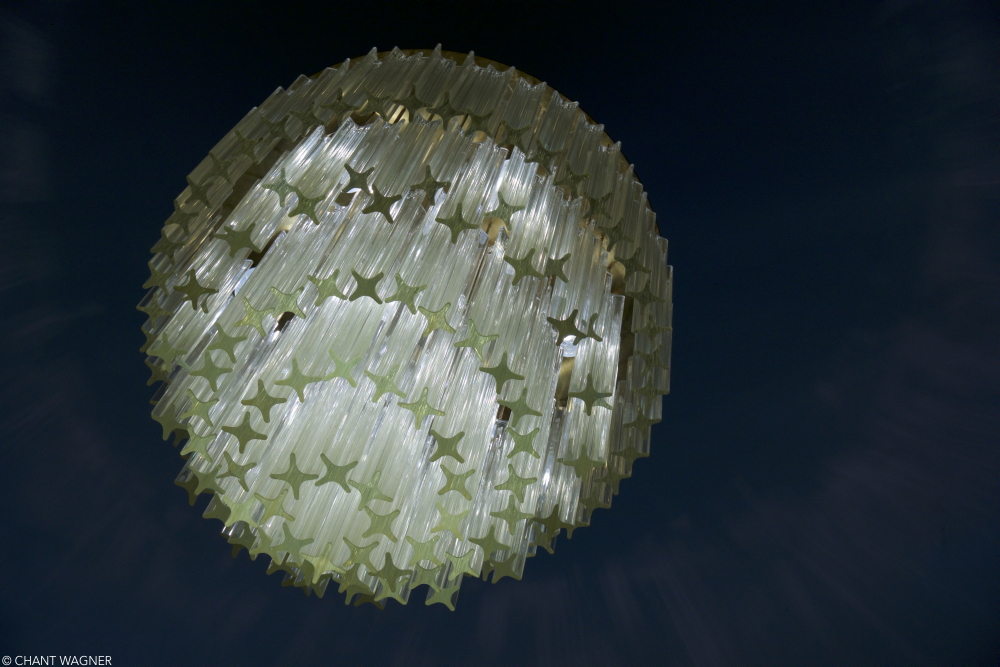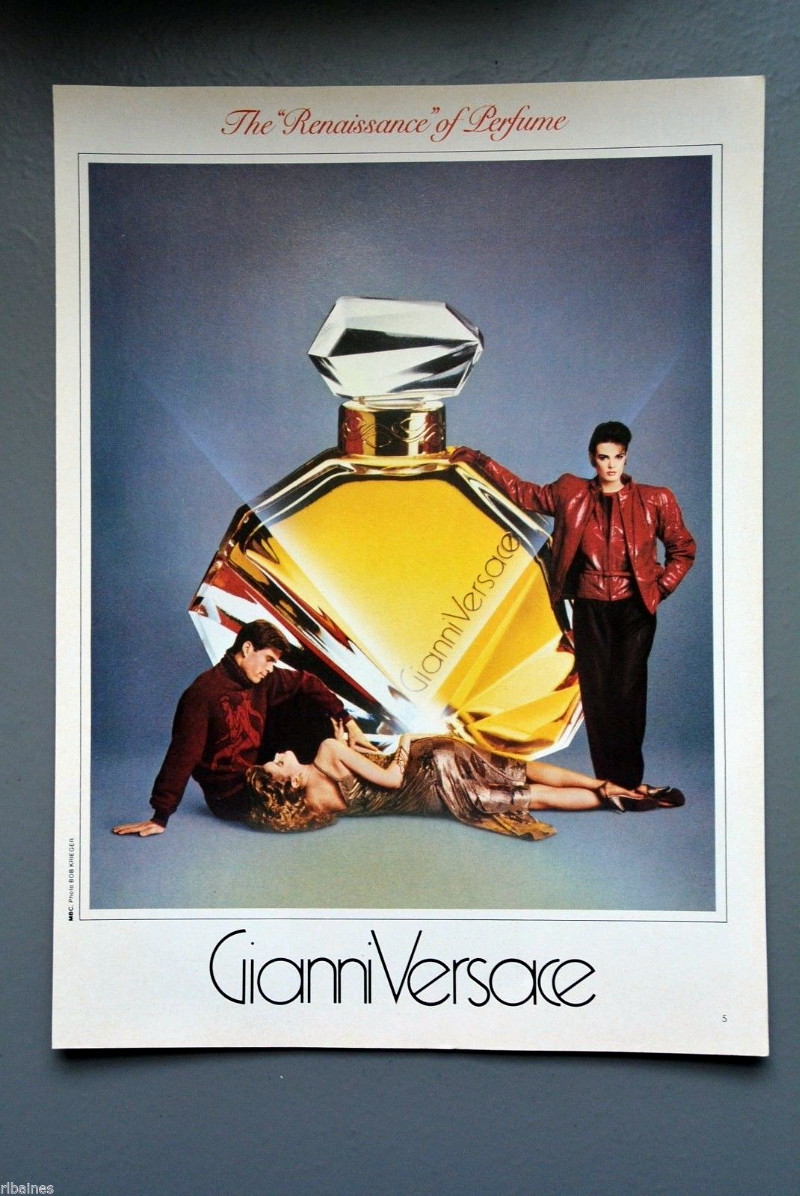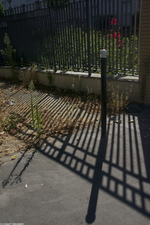The Subterranean Cloying Sweetness of the 70s-80s as a Precursor Sensation to the Alpha Gourmand, Angel by Thierry Mugler (1992) + The Role of Karl Lagerfeld
Shower of Stars - Angel by Mugler Angel in Photographs Inspired by Perfume © CHANT WAGNER
Re-Examining a Forgotten Facet of Perfume History of the 1970s-1980s, Before Mugler Angel - My Very Personal Essay
Current wisdom has it that Angel by Thierry Mugler (1992) was the starting point of the vast gourmand narrative still unfolding before our noses today in perfumery. We propose to travel back to the 1970s-1980s to unveil the existence of precursor gourmands - and there were not just one or two - but a significant constellation of them.
My Hunch
As a tot, at one point living and breahing in Hong Kong, making regular visits to the ancient Portuguese colony of Macau on great, white, heaving ferry boats with my parents (my father was appointed at both places) - one of my earliest culinay habits, which has stayed as a memory with me like a vintage snapshot, was to eat a sweet-but-not-too-sweet concoction from Chinese brown earthenware jars - hanging onto my chopsticks...
The flying-saucer shaped dark brown jars looked more like archaeological ceramic finds than your eye-popping sweets packaging for kids - but what they contained redeemed their apparent dusty dullness. There was candy in there, hard to make move and eat - but ultimately a triumph for the taste buds.
I remember that I conducted the tricky operation of eating from the archaic-looking jars at the back of a tall white colonial residence, in what was the area where house staff lived with their own kids. We played and ate together often; this early experience of an alien sweet taste with vague cereal-y overtones - and especially the texture - came not from my parents, but courtesy of local, cultural habits.
I would attempt to scoop out - with chopsticks - the gooey goodness with an ambery cast, which rested unmoved, in respose and hidden inside the jars, sitting on a tiny wooden stool. It was a struggle of toddler against the matter, but well worth it.
The sweet treat was a kind of Maltose syrup which was dense and thick, almost hard; you had to wrap it around at least one chopstick like a heated guimauve - except it was cold - pull out some from the jar and manage to lick it like an unwieldy lollipop - or alernatively, chew it - or both. I remember loving the taste, the texture, and the ritual of fishing out this mysterious golden ambery river of sweetness.
I recount this childhood memory because I owe it an intuition, which helped me see a link - at once olfactory and visual between the 1990s decade of scents impacted by the Ethyl Maltol of Angel by Thierry Mugler (1992) and the 1970s and 1980s decades.
It is now mainstream thinking to say that Mugler Angel is the first gourmand scent - a matrix for all the others. Yes, if you add patchouli and red fruits, a formula which has been copied to the death to this day. But a cloying sweetness existed already in the 1970s and 1980s, except it was not advertized and it was not sold with overt food cues, but rather through sex.
Image via R & L Baines on eBay
That One Precursor Gourmand
I experienced an olfactory shock stronger than the one I got from Angel, which I did buy when it came out. I liked Angel, but it did not shock me. I did not find it a difficult perfume. If Angel made me day-dream with its baby-blue glass and smoky patchouli haze, the perfume that really made me stop in my tracks, giving me pause and making me ask for its name, was the thick, sweet, oomph-laden Gianni Versace by Versace (1981).
I remember very clearly that smelling Gianni Versace on someone felt like a sort of punch to the stomach. What was that? It felt and moved like a scent beast. It was clear as the light of day that it smelled different. It was strangely sweet, in a borderline stifling manner. It did not smell like the fragrances found in the usual landscape of French perfumes.
Looking back, you notice that the fruity-floral chypre composition, now discontinued, featured a string of sweet floral notes - including honeyed Broom - which was doubled up with base notes that added a thick, syrupy quality to the composition, such as with tonka bean and myrrh. The tonka is still an important note today as a gourmand component in many fragrances, especially masculine ones. Paco Rabanne 1 Million (2008) has what Serge Lutens would call a "pastry" quality to it, thanks to that.
If Gianni Versace was the first of its kind I smelled, the years of the 80s decade, it turned out, would see more thickly sweet syrups trickling down our noses.
Karl Lagerfeld in the 1970s, I believe, started the designerr trend with his rich, thick and sweet tuberose scent Chloé original (1975), which was a bestseller. But even more so he persisted with Karl Lagerfeld (1978), a really strangely sweet perfume for men, easily borrowable by women. It's a bit of an OVNI - and continue to be so to this day.
Before him, the unmistakable sweetness of Jovan Musk Oil (1972) and Coty Wild Musk (1972) contributed to the history of inordinately sweet scents. The oils smell like a musk deer feasted on a bucket of corn syrup and excreted the result. But it stops short of smelling like caramel - an important distinction. We are living the caramel age right now. The 80s loved treacly perfumes. Think Chanel Coco or Biagiotti Roma or Joop! Femme. Gianni Versace was launched with the tag line "The Renaissance of Perfume." It was a landmark composition for me, even without having knowledge of the advertising campaign.
Syrupy perfumes might have been a way of courting the feminine customers, as more often than not, the culture pushes women to eat and drink sweeter than men. Women are supposed to be sweet - and this translates in foodways habits too. When the fragrance industry collectively thinks about who buys perfume in real life, in the 70s and 80s, it was clear that men had passed on the baton to their elephant-pants- and padded-shoulder-wearing feminine counterparts.
So, here is our hypothesis in a nutshell: sweet ambery perfumes gave way to very sweet ambery scents, which in turn led to the creation of syrupy ambers - and in the next decade to gourmand perfumes with explicit sweet-toothed foody notes. The latter demonstrates a cultural shift in meaning and olfactory exploration took place.
Hypothesis : sweet amber --> very sweet ambers --> syrupy ambers -- > gourmands
 Shower of Stars 2 - Angel by Mugler Angel in Photographs Inspired by Perfume © CHANT WAGNER
Shower of Stars 2 - Angel by Mugler Angel in Photographs Inspired by Perfume © CHANT WAGNER
Today in 2017, we are swimming in Ethyl Maltol; and in this infinite pool of Maltol, there is a water game, which is to amp up the dose of gooey goodness more and more. One day, we will reach taste saturation. Our sense of smell - as an adaptive sense - is right now behaving like a teen playing violent video games and calling them not-too-violent. There is always more and better; or worse, depending on your point of view. I am not dissing the phenomenon so much so as stating that there is a cultural logic at play along the lines of how we perceive an olfactory sensation, how the market competition is pushing for more - and the usual sane curiosity in exploring human limits. Of course, sugar has a history of its own - and like other addictions - perfumery embraced it to create its own brand of addiction.
Turning to the 1970s and 1980s to understand how Angel by Thierry Mugler came about, yields a productive crop. It's a wonder that perfume historians and critics have not seen it. Angel did not come out of the blue. A taste for cloying sweetness has been developed for a little under two decades prior to its arrival. The 70s were not just about musk and patchouli and the 80s were not just about power perfumes; they were also about new, suggestive doses of sweetness that could make a diabetic person fall into a coma if they were real.
Here below is a list of landmark perfumes from the 1970s-1980s, which said Pow! to the sweetness factor. Angel is great - compare it to Venezia which came out the same year. Venezia was so strong and sweet, I had to pitch it. Angel, I did not use up, but I kept.
And now a note: this is a creative essay offering a developed hypothesis. If you were inspired by it, please link back and quote explicitly. I consider blogging as an open, creative workshop. Some people think they can just stop and shop for ideas and next, write pieces for the traditional press, or their own blogs. It has become so bad sometimes, that I hesitate to use certain key words or references that might reflect what I'm thinking about. I did mention though a couple of things that were hints prior to this piece, which was started a year ago, almost. I mentioned Nirmala and the term "precursor".
Predatory perfume writing and/or pretend blogging - and/or moving in packs to blur lines as if it came out of your own group brainstorming - to cover your behinds, is wrong. Thanks.
Happy 11 Years of Blogging and St Patty's Day!
My Chronology of Gourmand Precursors
Jovan Musk Oil (1972)
Coty Wild Musk Oil (1972)
Chloé original by Chloé (under the artistic direction of Karl Lagerfeld) (1975)
Karl Lagerfeld by Karl Lagerfeld (1978)
Gianni Versace by Versace (1981)
Coco eau de parfum by Chanel (1984)
Lancaster Eau de Toilette Concentrée (1987)
Joop! Femme by Joop! (1987)
Roma by Laura Biagiotti (1988)
Venezia by Laura Biagiotti (discontinued and re-introduced in 2011) (1992)
Angel by Thierry Mugler (1992)
---------------------------------
Molinard Nirmala (1955) (reformulated in 1995). Resembles Angel.










